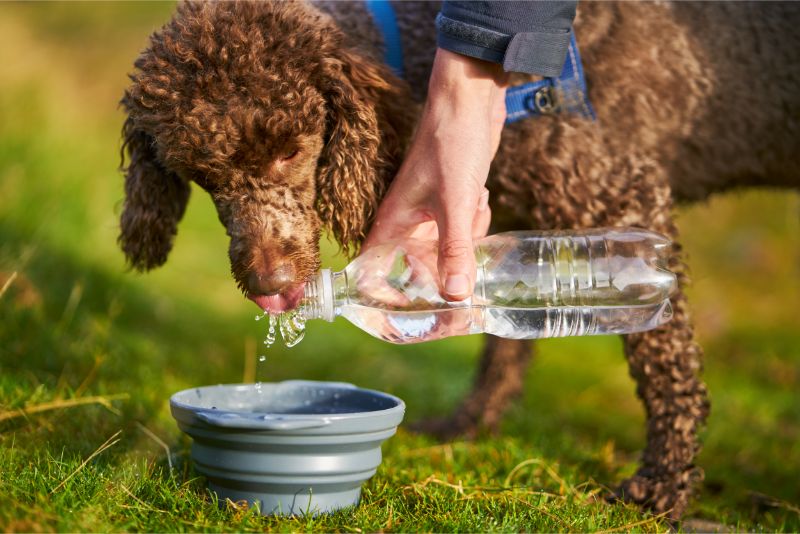
We all know how important water is to our survival, and the same goes for our pets. Because dogs and cats don’t regulate their body temperatures as efficiently as humans, it’s easy for them to become dehydrated – especially during the warmer months. With Pet Hydration Month occurring, it is the perfect time to discuss proper hydration for our furry friends.
Liquid Gold
Like humans, pets’ bodies are made up of mostly water. Water performs a variety of crucial functions, including:
- Maintaining stable body temperature
- Increasing energy levels
- Filtering waste
- Maintaining stable blood circulation
- Aiding in immune function
- Aiding with digestion
- Speeding up recovery from illness/injury
Pet Hydration Made Simple
Dogs and cats need about 1 ounce of water per pound of body weight, and more when they are outdoors in warm weather or they have been exercising. Older or sick pets, and those that are pregnant or nursing, also need extra water.
Focus on availability – Keep multiple water bowls throughout the home and make sure they are filled with fresh water at all times. Place a bowl in a shady spot while your pet is outside. Check on bowls regularly to ensure that they are filled or that your pet hasn’t tipped the bowl over.
Keep it clean – Taste can play a role in how much water a pet drinks. Wash your pet’s water bowl each day and replace the water more than once per day to keep it tasting fresh.
Get creative– Certain pets (cats in particular) have very little interest in drinking and can quickly become dehydrated. Try a circulating pet fountain or throw a few ice cubes into the bowl to increase your pet’s interest in water. Experiment with different bowls and placements to find the right fit for your pet.
What to Watch Out For
Pets lose water throughout the day by panting, sweating through the paws, and urinating and defecating. Replacing this lost water is crucial for your pet’s health – a loss of only 10-15% of the water in a pet’s body can sicken or kill a pet.
Signs that your pet is dehydrated are:
- Sunken eyes
- Loss of appetite
- Low energy or enthusiasm
- Dry mouth
You can also check for dehydration by lifting the skin on your pet’s back between the shoulder blades. The skin of a properly hydrated pet should sink back into place quickly, while a dehydrated pet’s skin will recover much more slowly.
Dehydrated pets should be offered water and taken to the veterinarian right away. If you have any further questions about pet hydration, please don’t hesitate to contact your partners in pet care at Clairmont Animal Hospital.

